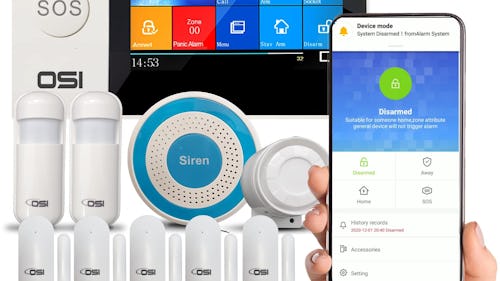Integrating Smart Home Systems: Understanding Compatibility and Connectivity in Devices

In today's world, smart home security systems are a revolutionary technology that is necessary to keep your home or office safe and improve your standard of living. However, before introducing these revolutionary systems to your home or office, it is crucial to understand their compatibility, connectivity, and automation.
This article discusses smart home connectivity and compatibility and its benefits to help you make an informed decision. It is a must-read if you plan to incorporate a smart home system.
Don't compromise on your safety and convenience. Read on to learn about the significance of smart home systems and how they can make your life easier and more secure. Let’s get into it.
Smart Home Compatibility
When discussing smart home systems or technology, it is essential to understand the different systems and their compatibility for successful and seamless integration and automation. It promotes a smooth and convenient smart home environment.
Smart home compatibility depicts how several smart home devices work and communicate with each other with no regard to the manufacturer. This has posed a significant challenge to many smart home users as most of their devices don’t communicate with each other, leading to frustration and high costs.
Although most smart home devices, such as smart TVs, door alarms, lighting, door locks, cameras, thermostats, etc., are compatible with most smart home standards, such as Google Assistant, Alexa, Apple Home Kit, and Samsung SmartThings, not all of these devices work or communicate together. This may require sophisticated hardware to bridge the gap.
How do these devices communicate seamlessly together? They use different communication protocols for smart home systems, such as Ethernet, WiFi, Zigbee, BLE, Thread, Matter, and Z-Wave.
Communication Protocols in Smart Home Ecosystem
Smart home communication protocols are standards that determine how smart devices communicate in a Smart Home Ecosystem. These communication protocols ensure the compatibility of various devices and help with automation. The popular communication protocols are Ethernet, BLE (Bluetooth low energy), WiFi, Z-Wave, Zigbee Thread, and Matter.
The table below explains the different communication protocols:
Communication Protocol | Advantages | Limitation | Security Mode | Compatibility |
|---|---|---|---|---|
BLE | - Perfect protocol for battery-powered smart device - Effective & Efficient direct device communication | Limited Bandwidth | AES-CCM Encryption | - Smart Locks - Door Sensors - Lightning - Speakers |
WiFi | - Good for data-inclusive devices -Supports wide range and coverage | -Power Consumption -Interference with other devices with different frequencies | WPA & WPA2 Encryption | - Printers - Streaming devices -Audio and Video |
Z-Wave | - Self-healing network for redundancy and adaptability | - Limited compatibility | AES-128 Encryption | - Smart lights - Security systems - Smart thermostat |
Zigbee | - Perfect for mesh network - Reliable connection & communication | - Limited range | AES-128 Standard | - Smart sensor - Lights - Thermostats |
Thread | - Promotes scalability - Great for battery-powered smart devices | - Limited device availability | Built-in Security layer | - Smart Plugs - Sensor |
Matter | - Compatibility across all smart home devices | - Certification is required to use | AES-128 Encryption | - Smart Sensor - Lights - Thermostat |
Smart Home Connectivity
Smart home connectivity refers to the ability of smart home devices to connect to the internet and communicate or work with each other. When all your smart devices are connected, you can control your home or office from a single, easy-to-use dashboard or remote, ensuring smooth, smart home technology.
To ensure seamless connectivity, ensure all your devices are compatible with each other and the chosen smart home standard/communication protocol. This will enable you to control all your devices from a single app or device, irrespective of the device's manufacturer.
Conclusion
Smart home systems have revolutionized the way we live and work. By understanding compatibility and connectivity, you can make informed decisions and avoid unnecessary costs while enjoying the benefits of these revolutionary systems. This article explains smart home connectivity and compatibility, including different communication protocols that aid compatibility. We hope you found this helpful; let's hear from you.